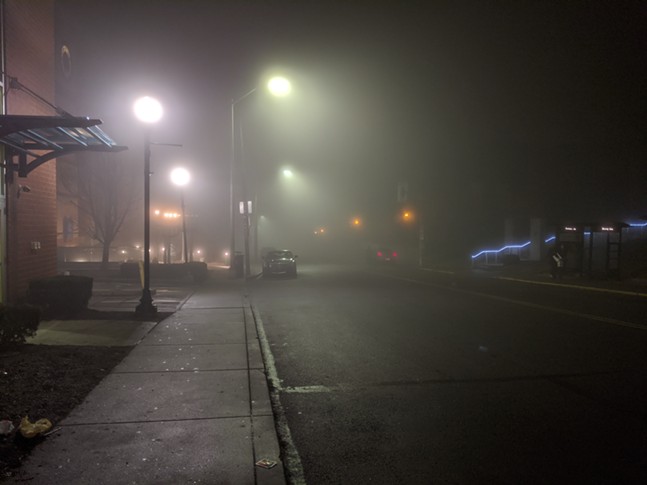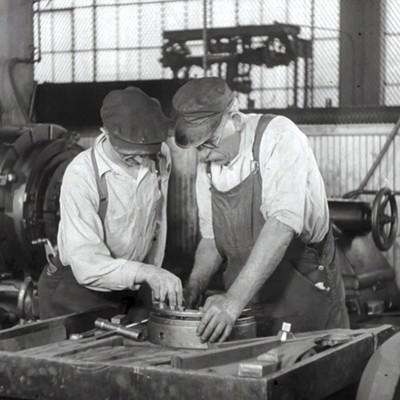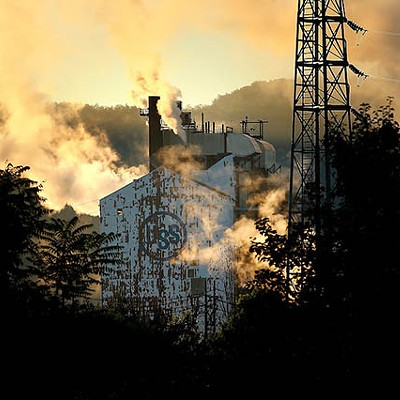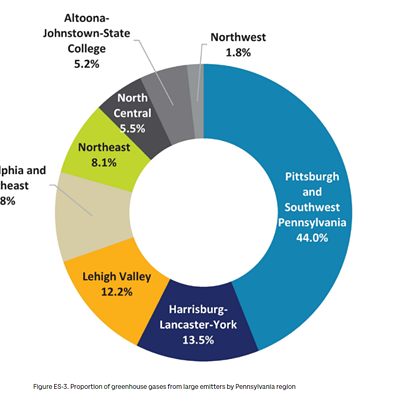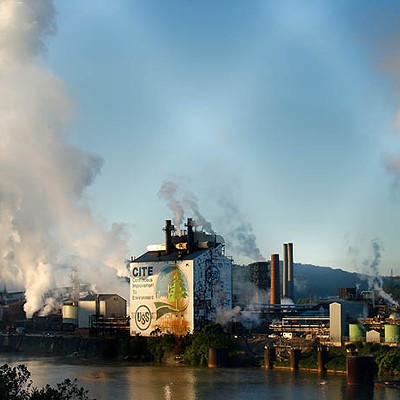What is a temperature inversion and how does it affect air quality?
For most of last week, Pittsburgh has been experiencing heavy fog paired with unhealthy air quality warnings and warmer temperatures. These environmental conditions were all related to a temperature inversion, which reverses the usual behavior of the atmosphere. Instead of the air getting cooler with increased altitude, as is normally the case, the air gets warmer.
During an inversion, the warm air sitting above the cool air works like a lid, trapping pollutants on the surface and causing a hazy combination of fog and smog. The coverage was so dense here that many Pittsburgh International Airport flights were canceled or delayed on Christmas Eve and day.
On Thu., Dec. 26, the Allegheny County Health Department issued a statement about the air quality. "The Allegheny County Health Department continues to monitor the air quality in our region following several days of heavy fog, very light winds and continued strong and lengthy temperature inversions," the ACHD wrote in a post on its Facebook page. The post also noted that "preliminary data has shown exceedances of the 24-hour federal PM2.5 standard at the Liberty monitor" from Dec. 21-25. (PM2.5 refers to inhalable particles with a general diameter of 2.5 micrometers or less, according to the EPA. The pollutant particles can come from cars, planes, power plants, smoke, and other emitters.)
The ACDH statement also mentioned that the department was in communication with U.S. Steel to make sure it was in compliance with its permits (presumably about their emissions, but the statement did not specify). In response, local air quality activist group GASP (Group Against Smog and Pollution) published a blog on its website about the issue.
"We’ve said it before and it’s worth repeating: Even when operating under normal conditions, U.S. Steel is permitted to literally emit tons of pollution every year," said Rachel Filippini, GASP executive director, in the post. "The company has demonstrated that it can operate at a reduced production rate when market conditions aren’t prime, which means they could choose to do so when weather conditions are poor. They choose not to.”
U.S. Steel has faced scrutiny over the years for the level of pollution from their Clairton Coke Works plant, but especially so in the past year. On Dec. 24, 2018, exactly one year before 2019's inversion-induced Christmas smog, a fire broke at the plant, which released higher than normal pollutants into the air and water systems. It was followed by a second fire six months later.
During an inversion, the warm air sitting above the cool air works like a lid, trapping pollutants on the surface and causing a hazy combination of fog and smog. The coverage was so dense here that many Pittsburgh International Airport flights were canceled or delayed on Christmas Eve and day.
On Thu., Dec. 26, the Allegheny County Health Department issued a statement about the air quality. "The Allegheny County Health Department continues to monitor the air quality in our region following several days of heavy fog, very light winds and continued strong and lengthy temperature inversions," the ACHD wrote in a post on its Facebook page. The post also noted that "preliminary data has shown exceedances of the 24-hour federal PM2.5 standard at the Liberty monitor" from Dec. 21-25. (PM2.5 refers to inhalable particles with a general diameter of 2.5 micrometers or less, according to the EPA. The pollutant particles can come from cars, planes, power plants, smoke, and other emitters.)
The ACDH statement also mentioned that the department was in communication with U.S. Steel to make sure it was in compliance with its permits (presumably about their emissions, but the statement did not specify). In response, local air quality activist group GASP (Group Against Smog and Pollution) published a blog on its website about the issue.
"We’ve said it before and it’s worth repeating: Even when operating under normal conditions, U.S. Steel is permitted to literally emit tons of pollution every year," said Rachel Filippini, GASP executive director, in the post. "The company has demonstrated that it can operate at a reduced production rate when market conditions aren’t prime, which means they could choose to do so when weather conditions are poor. They choose not to.”
U.S. Steel has faced scrutiny over the years for the level of pollution from their Clairton Coke Works plant, but especially so in the past year. On Dec. 24, 2018, exactly one year before 2019's inversion-induced Christmas smog, a fire broke at the plant, which released higher than normal pollutants into the air and water systems. It was followed by a second fire six months later.

